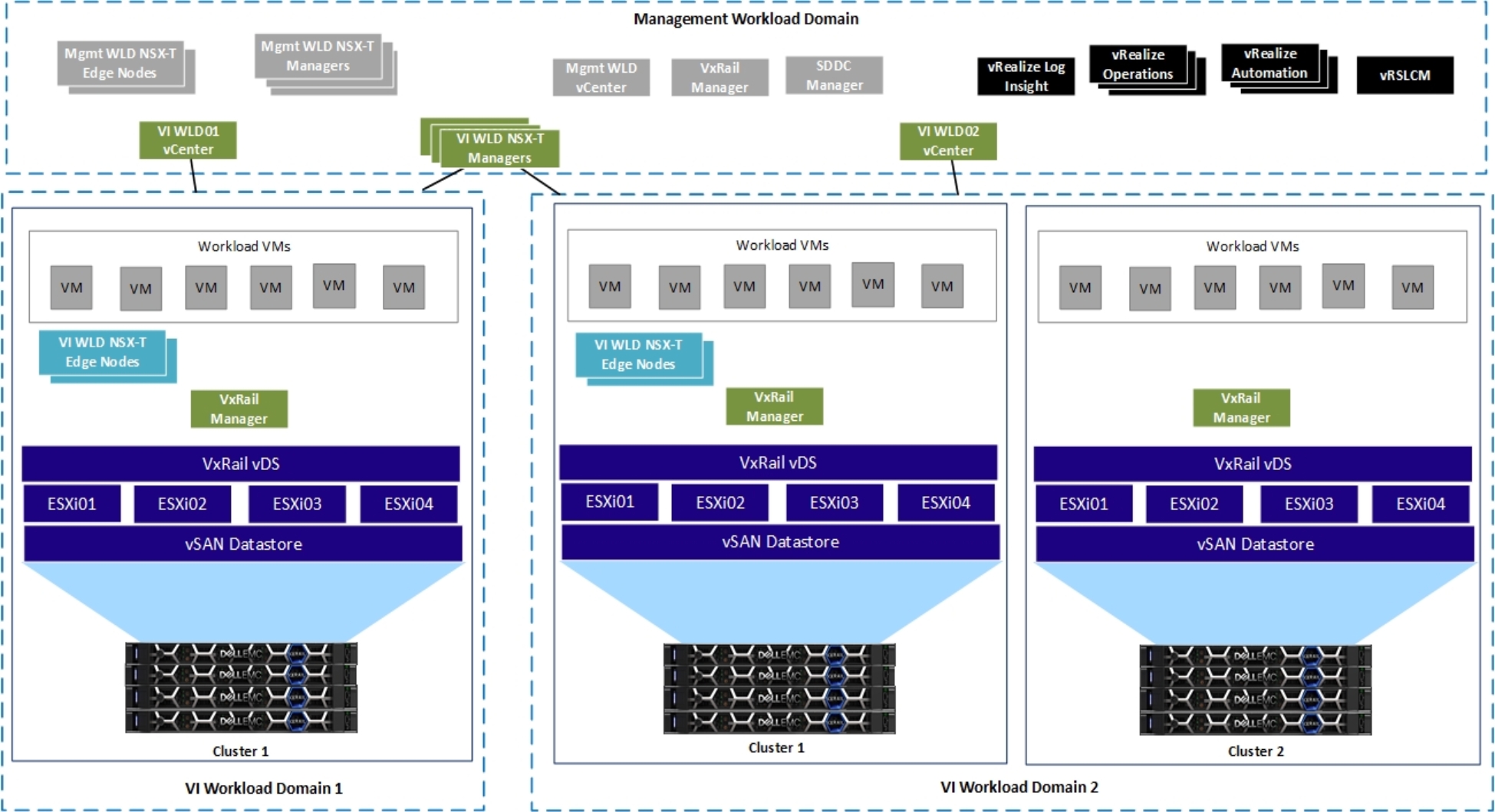Home > Integrated Products > VxRail > Guides > Architecture Guide—VMware Cloud Foundation on VxRail: VCF 4.5 on VxRail 7.0 > VI workload domain
VI workload domain
-
Overview
The VI WLD can consist of one or more VxRail clusters. The VxRail cluster is the building block for the VI WLD. The VxRail clusters in the VI WLD can start with three hosts, but four hosts are recommended to maintain FTT=1 during maintenance operations. The hosts can be selected when adding the first VxRail cluster to the WLD. The vCenter and the NSX-T Managers for each VI WLD are deployed into the Mgmt WLD.
When the first VxRail cluster is added to the first VI WLD, the NSX-T Managers (3 in a cluster) are deployed to the Mgmt WLD. Subsequent NSX-T based VI WLDs can either use the existing NSX-T and existing NSX-T Managers, or a new NSX-T instance with three new NSX-T Managers can be deployed.
Typically, the first VxRail cluster can be considered a compute-and-Edge VxRail cluster because it contains both NSX and compute components. NSX Edge Nodes can be deployed to this first VxRail cluster. The second and subsequent VxRail clusters in a VI WLD can be considered compute-only clusters because they do not need to host any NSX Edge Nodes.
You can dedicate a VxRail cluster for only the Edge Node components if either dedicated compute or bandwidth is required for the Edge Node cluster.

Figure 4. VI WLD component layout with NSX-T everywhere
vCenter design
The SDDC Manager deploys VI WLD vCenter when you create a VI WLD. It is deployed in the Mgmt WLD, as shown in the preceding figure. During deployment, it is added to the existing SSO domain, allowing a single pane of glass to manage both the management and VI WLD vCenter instances.
